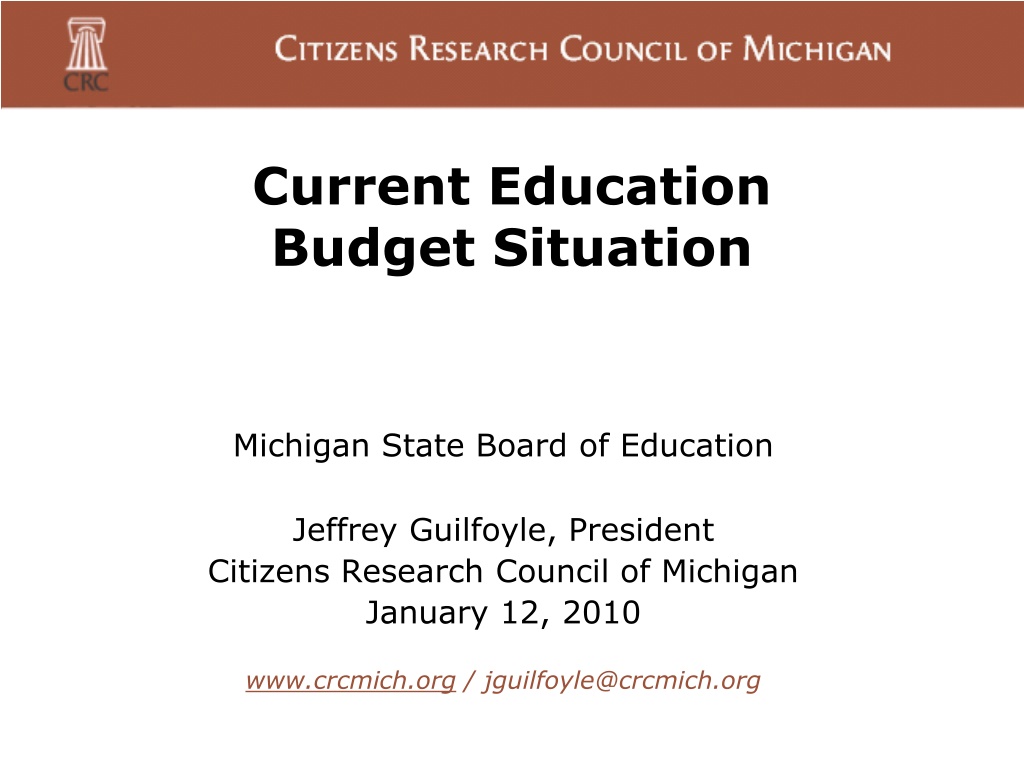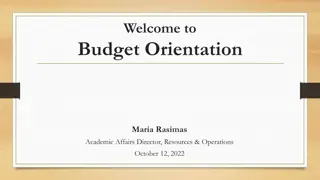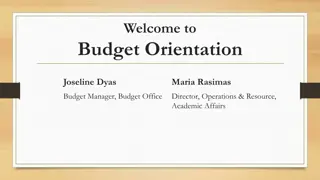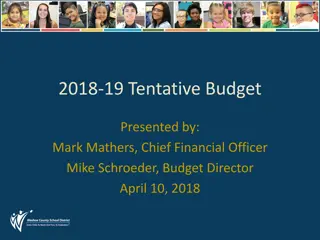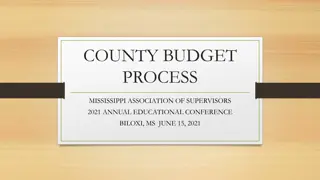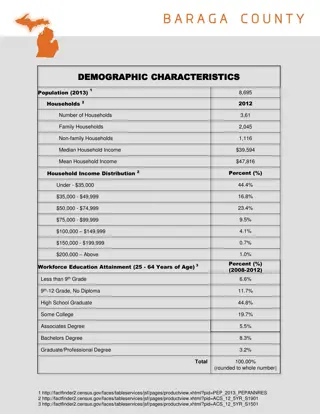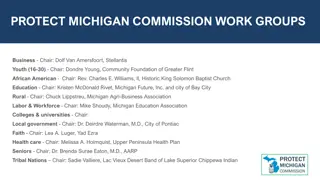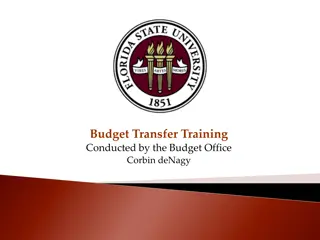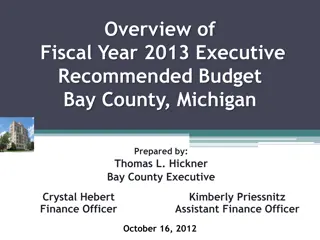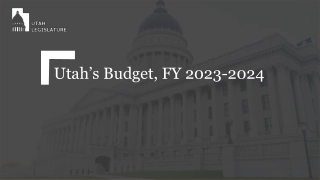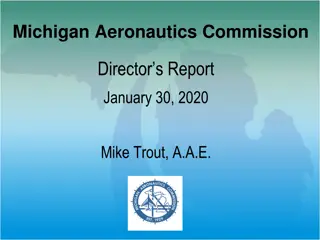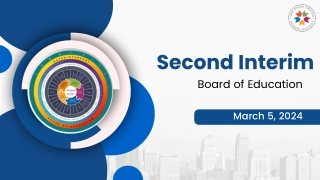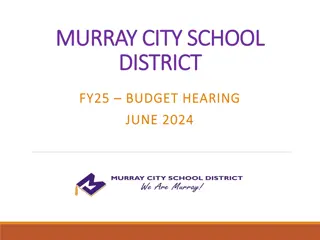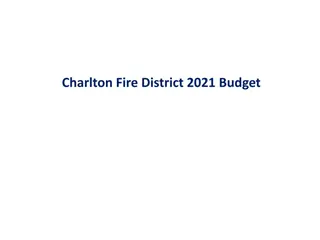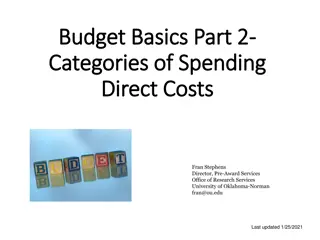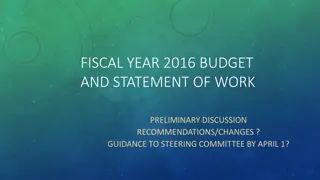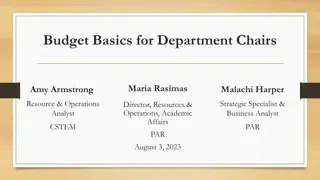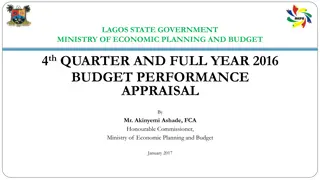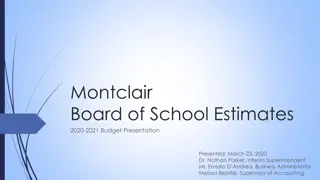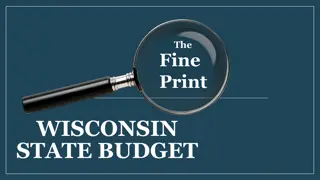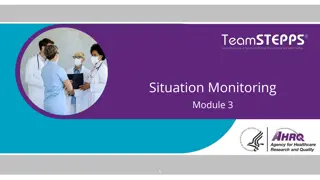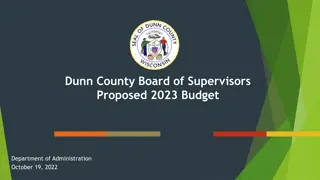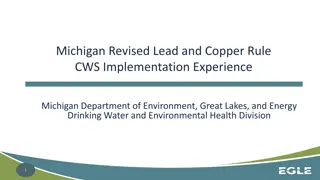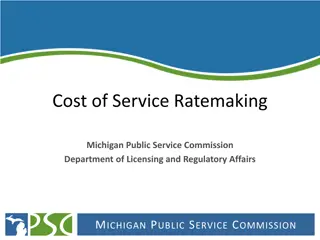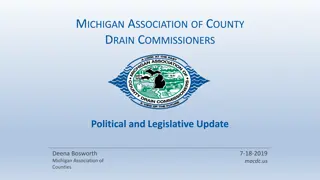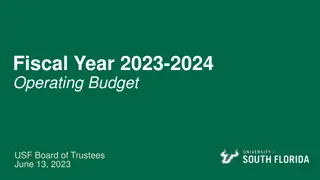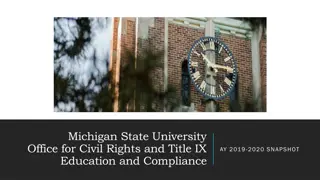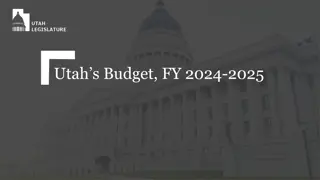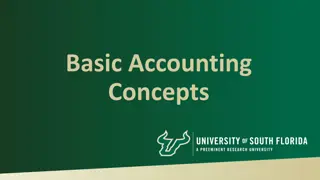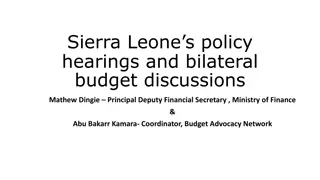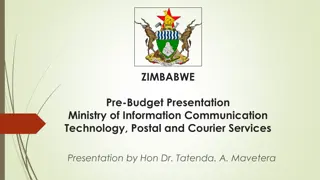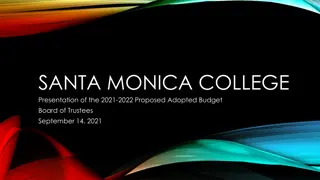Current Education Budget Situation in Michigan State
Citizens Research Council of Michigan, founded in 1916, analyzes the state's education budget. Since 2000, SAF revenues have trailed inflation by $2.5 billion. Major revenue sources like sales tax and income tax have declined, impacting the school aid fund. Real estate transfers have also seen fluctuations. The FY 2010 budget faced challenges due to revenue projections being lower than previous years.
Download Presentation

Please find below an Image/Link to download the presentation.
The content on the website is provided AS IS for your information and personal use only. It may not be sold, licensed, or shared on other websites without obtaining consent from the author. Download presentation by click this link. If you encounter any issues during the download, it is possible that the publisher has removed the file from their server.
E N D
Presentation Transcript
Current Education Budget Situation Michigan State Board of Education Jeffrey Guilfoyle, President Citizens Research Council of Michigan January 12, 2010 www.crcmich.org / jguilfoyle@crcmich.org
Citizens Research Council Founded in 1916 Statewide Non-partisan Private not-for-profit Promotes sound policy for state and local governments through factual research accurate, independent and objective Relies on charitable contributions of Michigan foundations, businesses, and individuals www.crcmich.org 2
SAF Revenues Trail Inflation By $2.5 Billion Since 2000 FY 11 $13.0 Billions of $ Inf. Adj SAF Rev Actual SAF Rev FY 11 $10.5B 3 Source: CRC calculations. FY 2009 and FY 2010 are the January 2010 Consensus estimates.
Sources of State School Aid Revenue (Totals $10.9B in FY 2009) 4 Note: Totals are preliminary. Totals do not include federal aid, stimulus revenue, or GF-GP transfers.
Performance of Major School Aid Fund Revenue Sources Sales Tax Had been trailing inflation, dropped double digits in FY 2009 and now below FY 2000 level Income Tax Was protected from rate cuts earlier in decade, but did not benefit from increases later in decade. Down double digits in FY 2009 and now below FY 2000 level MBT Added to the SAF in FY 2008, mostly replaced other SAF taxes, but roughly $250 million of new revenue; growth going forward based on inflation, not growth in MBT SET Up 47% this decade, but will fall sharply going forward 5
Performance of Major School Aid Fund Revenue Sources Real Estate Transfer Peaked at over $300 million per year in FY 2004 and FY 2005, but only $125 million in FY 2009 Other Addition of 3 Detroit Casinos, expansion of lottery games, and 2002 tobacco increases boosted SAF revenues, but not a source of significant growth going forward FY 2011 Consensus forecast is for 0.2% growth; could see faster growth if economy turns but it will be years before the old level is regained 6
FY 2010 Budget Balancing Measures Ongoing FY 2010 SAF revenues projected to be $1.0 billion below FY 2008 Enacted FY 10 Cuts: $165 per pupil ($263M) ISD reduction ($16M) 20j veto ($52M) Other Cuts ($35M) Proposed proration $127 per pupil ($212M) was rescinded Stimulus money in budget: FY 09 $600M FY 10 $450M FY 11 $184M (remainder of funds)
School Aid Fund Budget 2009 and 2010 FY 2009 Estimate FY 2010 Estimate Revenues Beginning Balance $247.1 $229.1 May Consensus Estimate $10,943.7 $10,563.0 Jan Revenue Revisions ($21.5) ($104.9) Misc. Revenue Adjustments $23.2 $0.0 ARRA K-12 Approp $597.5 $450.0 GF-GP Grant to Schools $76.5 $30.2 Federal Aid $1,503.6 $1,601.8 Total Estimated Revenue $13,370.1 $12,769.2 Expenditures Initial Appropriations Formula Funding Adjustments Expenditure Adjustments Lapses $13,378.9 ($119.1) ($65.0) ($53.8) $12,823.5 ($108.0) NA NA Total Projected Expenditures $13,141.0 $12,715.5 8 Estimated Year End Balance $229.1 $53.7 Source: Senate Fiscal Agency estimates adjusted by CRC. All dollar totals in millions.
School Aid Fund Budget FY 2011 Shortfall FY 2011 Estimate Revenues Beginning Balance $53.7 January Consensus Estimate $10,480.5 Remaining ARRA $184.1 GF-GP Grant to Schools $30.2 Federal Aid $1,602.0 Total Estimated Revenue $12,350.5 Expenditures FY 2009-10 Current Service Baseline $12,773.5 Total Projected Expenditures $12,773.5 Estimated Year End Balance ($423.0) Student Count 1,580,100 9 Approx. Shortfall per pupil ($268) Source: Senate Fiscal Agency estimates adjusted by CRC. All dollar totals except per pupil shortfall in millions.
Shortfall Estimates for FY 2011 Vary January January January January January Consensus RSQE Admin SFA HFA FY 2011 SAF $10,480.5 $10,531.0 $10,607.0 $10,381.0 $10,530.0 Diff From Cons. NA $50.5 $126.5 ($99.5) $49.5 Per Pupil Shortfall ($268) ($236) ($188) ($331) ($236) 10 Source: Note per pupil shortfall estimates assume FY 2010 at the January Consensus level for all forecasts and the January Consensus for the FY 2011 pupil count.
Will It Get Better? Short Run Districts have not yet fully incorporated FY 2010 cuts FY 2011 shortfall is greater than what was cut in FY 2010 Longer Run CRC 2008 study (pre-recession) found that SAF revenues would grow approximately 3.0% per year while spending pressures grew 4.7% Projected statewide enrollment decline of 1.5% per year will be a blessing and a curse for school districts; Bottom Line: SAF problem does not self correct 11
How Does Higher Education Look? Compared to FY 2000: community college budget at roughly the same level; state higher education budget roughly 9% lower; Community College budget flat from FY 2009 to FY 2010 Universities down 0.4% from FY 2009 to FY 2010 $68 million of ARRA in FY 2010 university budget (4.4%) Financial Aid cut $140 million (-62%) including: Competitive scholarships $17.9 million (-50%) Tuition grants $25 million (-44%) Michigan Promise grant $80 million (-100%) May be protected somewhat from cuts in FY 2011 due to use of ARRA funds Restoration of any funds unlikely as GF shortfall is $1.2 billion for FY 2011 12
Michigan Personal Income Falling Relative to U.S. Michigan per Capita Income as a Percent of U.S. Per Capita Income Rank has fallen from 20th in 2001 to 37th in 2008 122% 93% 87% 13 Source: CRC calculations from Bureau of Economic Analysis data. March 24, 2009 personal income release for years Prior to 1969. October 16th release for years after 1969.
CRCs Education Study Comprehensive Look at K-12 education provision in Michigan including Governance School Finance Fiscal Realities and Spending Reforms Public School Academies School District Organization and Service Provision Analysis of Education Reforms Pieces will be published as they are completed; first paper on governance will be released soon 14
Education Governance Examine current structure including the roles of the federal government, state board and superintendent, Michigan Dept. of Ed, ISDs, local school boards, et. Discuss issues relating to centralized authority vs. local control Interstate comparisons in governance and organization Implications of current system Various models of education governance (separate paper) 15
K-12 Revenues and School Finance Pre-Proposal A Funding Structure Proposal A and School Revenues Foundation Allowance Formula Categorical Grants State and Districts Budgeting Processes and Timelines Interstate Comparisons of Funding Structures Changes to tax Structure Predictability and volatility of revenues Equity in school funding 16
Fiscal Realities and Spending Reforms Cost Pressures Capital Expenditures Measures of Districts Fiscal Health - Indicators of fiscal stress - Deficit districts Interstate Comparison of Education Spending Analysis of Spending Reforms/Cost Reductions 17
Public School Academies (PSAs) and School Choice Analysis of PSAs - Academic achievement and success - Accountability (both for students in PSAs and for PSAs) - Role as models for traditional schools - Relationship between PSAs and traditional districts Schools of Choice Public Money for Private Schools: Vouchers and tax credits Impact of Choice on All Students and Schools 18
School District Service Provision Survey of Local Districts Identify School District Cooperation, Collaboration, and Privatization Role of ISDs Barriers to Cooperation and Privatization 19
Analysis of Educational Reforms Identify Effective Schools and Programs Analyze Changes to Educational System International Comparisons Alternate Delivery Methods Pre-Kindergarten through Grade 14 or 16 Better Use of Technology Collaboration with U of M Public Policy Class 20
The Citizens Research Council of Michigan is supported by gifts and grants of all sizes coming from many different donors including: Foundations Businesses Organizations Individual Citizens like you We hope you will consider supporting CRC. For more information or to donate, contact us at: Citizens Research Council of Michigan 38777 Six Mile Road Livonia, MI 48152 (734) 542-8001 www.crcmich.org 21
CRC Publications are available at: www.crcmich.org Providing Independent, Nonpartisan Public Policy Research Since 1916 22
